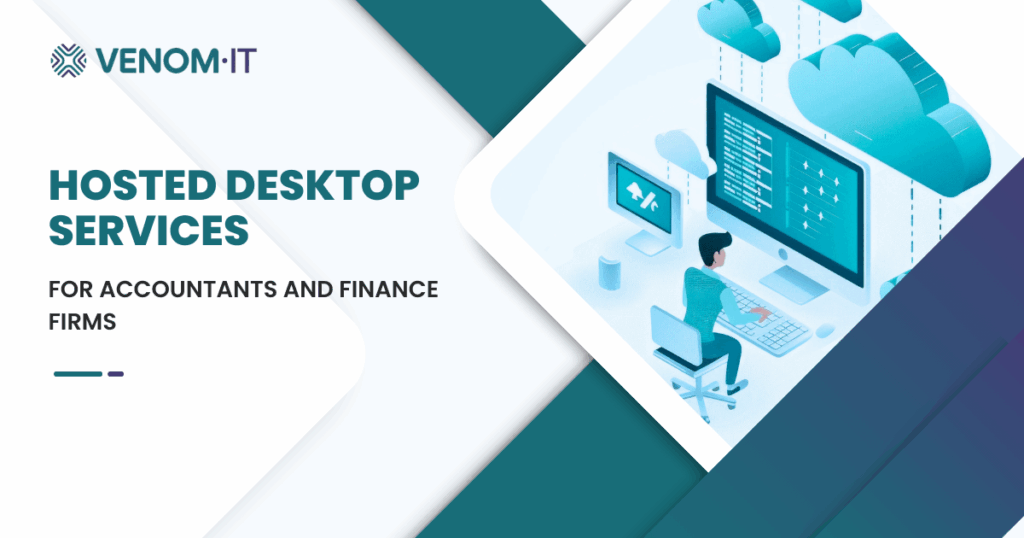
How Does Hosted Desktop Help Hybrid Workforces?
June 11, 2025Businesses across the UK with hybrid workforces are increasingly becoming the norm. Small and medium-sized enterprises (SMEs) have had some years now to analyse the benefits of remote work, striving to meet the demands of these flexible environments. A key technology enabling secure data access and consistent performance for remote employees is hosted desktop infrastructure.
Why hybrid teams are using hosted desktops
Hosted desktops are referred to by many names including Hosted, Desktop Virtualisation, Cloud Based Desktop, and Virtual Hosted Desktop. However, the easiest way to understand a hosted desktop is to think of a desktop hosted in the cloud. This makes accessing a more traditional office desktop environment accessible from anywhere.
In essence, a hosted desktop is a cloud-based solution that virtualises business applications and data, allowing users to fully access their desktop environment from any device, at any time, and anywhere. With little more than an internet connection, hybrid-working teams can access their entire desktop without the need for an in-office IT infrastructure.
IT considerations for a hybrid workforce
To maintain productivity and efficiency across hybrid workforces, these teams must opt for a scalable infrastructure that is capable of addressing all of the key remote work challenges. This includes considerations such as managing cyber security risks, ensuring seamless connectivity, and providing secure data access.
In this guide, we’ll cover both the benefits and challenges hybrid SMEs face when adopting a cloud-based IT infrastructure like hosted desktops.
What are the benefits of supporting Hybrid working with hosted desktop?
Enhanced Security
As company data and applications are hosted on centralised servers, there are fewer concerns related to the data loss or theft of endpoint point devices, such as laptops or tablets. Instead, IT teams can adequately control access to sensitive data and monitor any unusual behaviour or patterns across the network.
Cost Efficiency
With the use of hosted desktops, SMEs can accommodate diverse devices and extend the lifespan of their existing hardware. There’s no need to invest in additional computers or systems specifically for remote workers. This allows resources to be better spent in other areas of the business.
Greater Flexibility
Above all, hosted desktops provide a hybrid team with greater working flexibility. A virtual hosted desktop can be accessed from anywhere in the world, which means remote employees can benefit from a consistent desktop experience while adopting a BYOD (Bring Your Own Device) policy.
Ability to Scale
Another advantage that hosted environments can bring to hybrid teams is the ability to scale IT systems, according to organisational needs. Desktops can be easily added or removed without additional hardware considerations, an important factor for growing SMEs. Most DaaS (Desktop as a Service) providers work with a flexible subscription service, ensuring you only pay for the resources you actually use.
Centralised Management
Last but not least, hosted desktops offer simplified IT support as administrators can manage, update, and troubleshoot hundreds of virtual desktops from the convenience of a central console. Similarly, security policies and updates can be updated and applied across the entire network to reduce the risk of potential vulnerabilities.
Key challenges for hybrid SME teams
As with all technologies, hybrid working can also present SMEs with a few challenges. Here are five key issues SMEs may experience when adopting a hosted desktop hybrid working model:
- Upfront Investment: the initial costs associated with hosted desktop hybrid working setup can be expensive, as they include migration and licensing fees.
- Poor User Experience: slow internet connections can cause latency issues and affect user experience or productivity. You will be somewhat dependent on your remote workers having access to stable connecitons.
- Ongoing Maintenance: regular security and software updates or patches require consistent attention, but can mostly be managed with ease by a reliable IT partner.
- Scalability Challenges: unexpected growth or resource demands could strain the system if not planned properly. A Managed IT solution will help mitigate and anticipate this obstacle.
- Provider Dependency: SMEs that rely on a single DaaS provider may face disruptions or limitations if the service experiences downtime. This is unlikely, but taking time to research your chosen desktop provider and taking consultation on which route to go will be beneficial.
Related News


9 min read


8 min read


4 min read